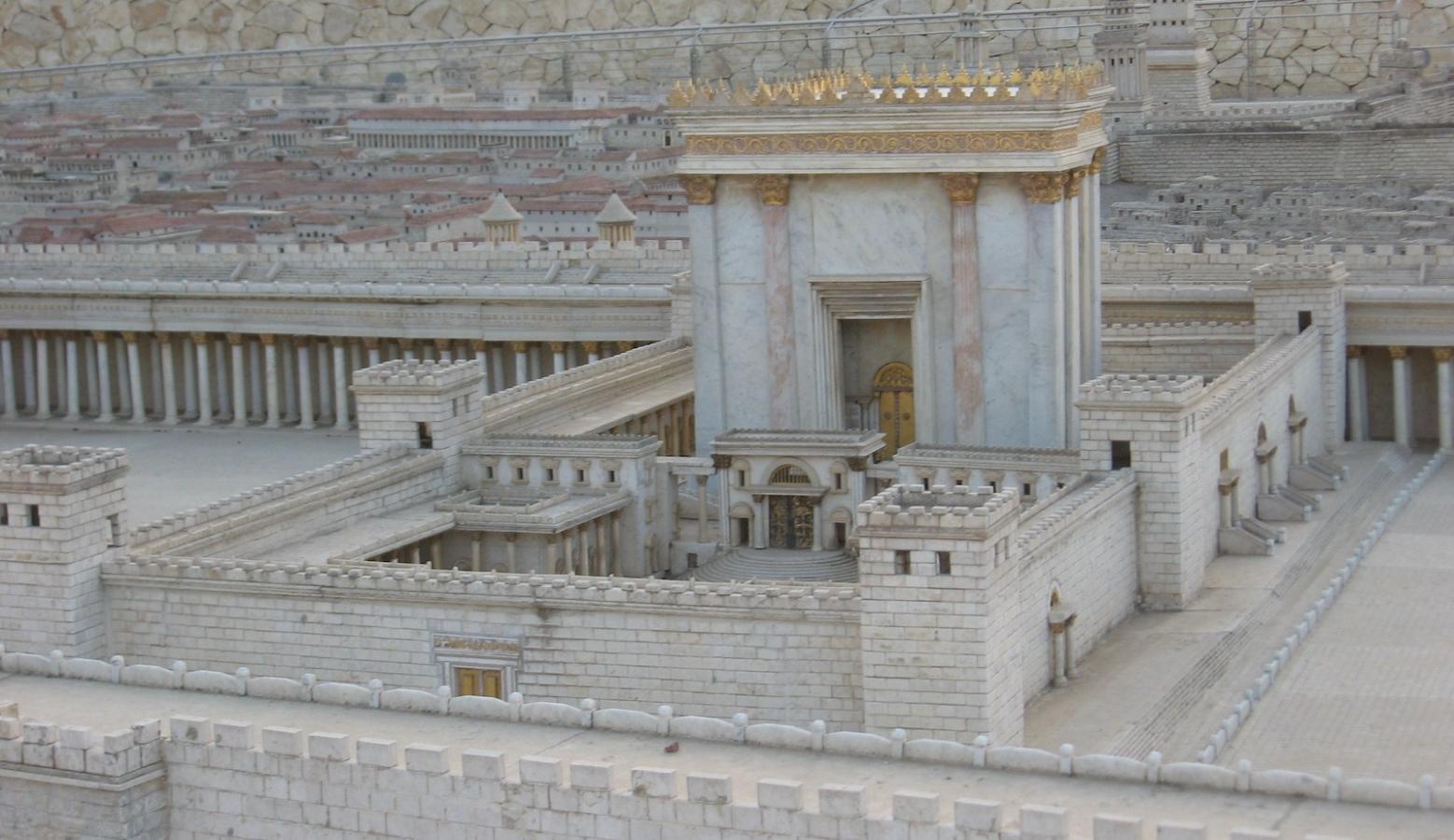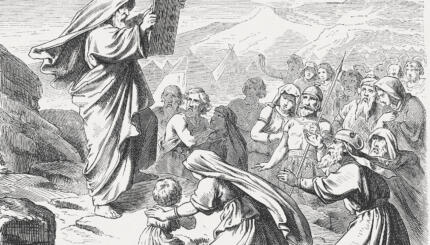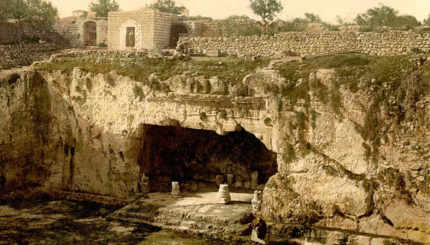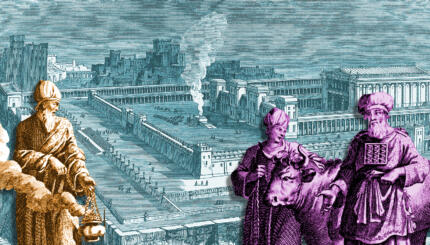In antiquity, the Jerusalem Temple was the religious center of Jewish life. The primary activity of the Temple was offering sacrifices — animals, grains, wine and more — to God. Numerous sacrifices were offered up every day of the year, and a large staff of priests and Levites, headed by the high priest, ensured the smooth functioning of the divine service.
There were in fact several Jewish Temples on the same site over the course of centuries. Originally, the Israelites had a portable Temple, called the mishkan or tabernacle, which traveled with them in the wilderness until they settled in the land of Israel. About 1,000 years before the Common Era, King Solomon built the first permanent Temple on Mount Moriah in Jerusalem. This was destroyed by the Babylonians in 586 BCE and rebuilt about 70 years later when the Jews were allowed to return from exile. The Second Temple remained on that site for more than 500 years. It was radically renovated by Herod the Great in about 20 BCE. It was finally destroyed in 70 CE by the Romans.
The Temples were large complexes. At the center was the Holy of Holies, a sacred room only entered by the high priest on Yom Kippur. Beyond it were a series of courtyards arranged concentrically in order of decreasing sanctity. The First Temple and the earlier version of the Second Temple had fewer of these than the renovated version of the Second Temple designed by Herod. There were also rooms for many kinds of activities throughout the Temple complex.
This article lists some of the best-known ritual items in the Temple.

Help us keep Jewish knowledge accessible to millions of people around the world.
Your donation to My Jewish Learning fuels endless journeys of Jewish discovery. With your help, My Jewish Learning can continue to provide nonstop opportunities for learning, connection and growth.
Ark of the Covenant
Inside the Holy of Holies was the sacred Ark of the Covenant, a large box which, according to legend, housed the Ten Commandments (and possibly also a scroll of the Torah). According to the Hebrew Bible, it was to be 2.5 by 1.5 by 1.5 cubits — or about 45 inches long and 27 inches square on the end (Exodus 25:10). It was supposed to be gilded all in gold and have four rings secured to the sides so two poles could be threaded through and used to carry it. The lid of the ark was called the kapparot, or “mercy seat,” and it was guarded by two gold cherubim perched on top of it.
According to tradition, the ark contained two sets of the Ten Commandments, the original set that Moses threw at the Golden Calf and broke into pieces, and the second set he retrieved after that incident. The ark was sometimes carried in front of the Israelite army and it was, for a time, captured by the Philistines. According to the Talmud, the location of the ark was already a mystery by the late Second Temple period.
Parochet (Curtain)
In the tabernacle and in earlier versions of the Temple, a special curtain separated the Holy of Holies from the rest of the Temple complex. In many modern synagogues, the Ark has a curtain hiding the Torah scrolls from view, also called a parochet, in imitation of this original curtain.
Mizbeach (Altar)
The Temple sanctuary had a large altar for sacrifices. It was tall and square-shaped, with a flat top and four “horns” on the corners and a ramp on the south side leading up to the top. The top had a fire for burning sacrifices, and blood was often applied to different parts of the altar depending on the type of sacrifice offered.
Menorah
This seven-branched candelabrum stood outside the Holy of Holies and was kept lit day and night. It is for this reason that synagogues today often have a ner tamid, or eternal light, hanging near the ark where the Torah scrolls are housed (which imitates the Holy of Holies). The design, a center flame with three branched flames on either side, is the inspiration for the classic design of the Hanukkah menorah, or hanukkiah.
Incense Stand
Incense was burned daily in the Temple to create a sweet smell for God — and possibly to cover the smell of the other sacrifices, as Maimonides suggests. The talmudic rabbis understood the incense to also be a kind of offering. A special stand was used for this purpose. On Yom Kippur, the high priest brought the incense into the Holy of Holies, where it created a kind of smoke screen over the Ark of the Covenant (Exodus 30:36).
The Torah gives a recipe for compounding the incense (Exodus 30:34) but rabbinic literature elaborates on this recipe with more ingredients and also indicates that the precise recipe was the province of the priestly family of Avtinas (Mishnah Yoma 3:11).
Showbread Table
The showbread, lechem panim or “bread of faces” in Hebrew, was a bread that sat out at all times in the sanctuary on a specially designated table (Exodus 25:30) as an offering for God. It was baked and replaced each week.
Mikveh (Ritual Bath)
Purity, of people and objects, was required in God’s house. Archaeological evidence suggests that the Temple complex was surrounded by many mikvehs where priests and pilgrims could immerse in order to purify themselves before entering. Today, Jews use mikvehs for a variety of purposes, including conversion and observing the laws of niddah.




